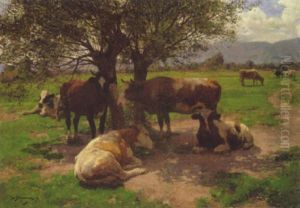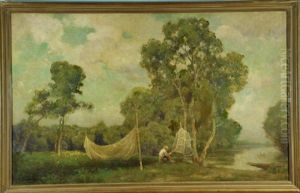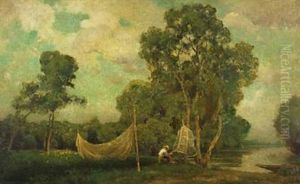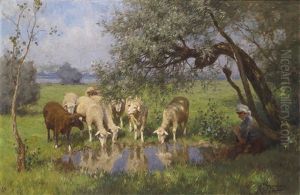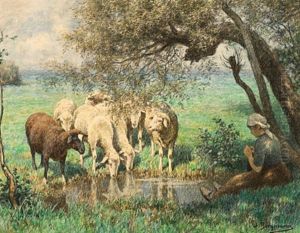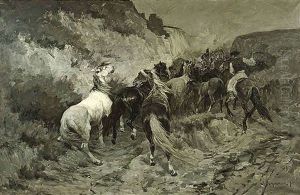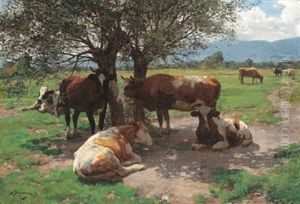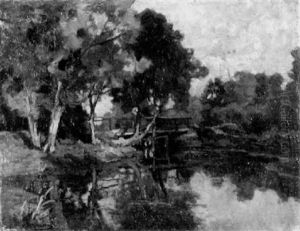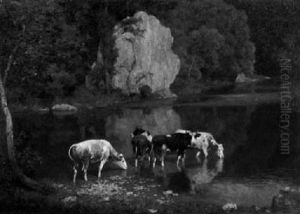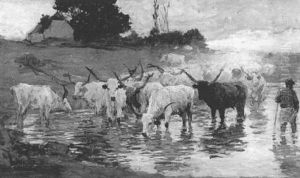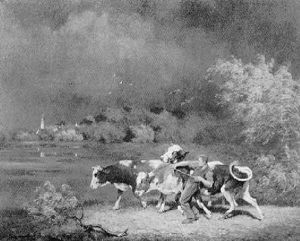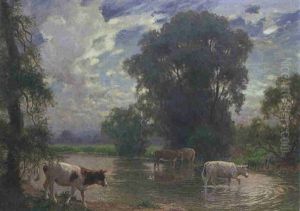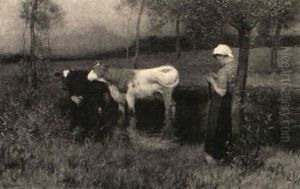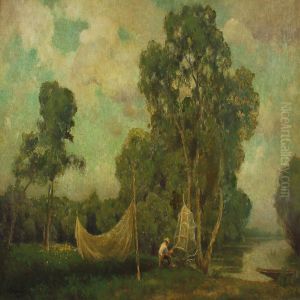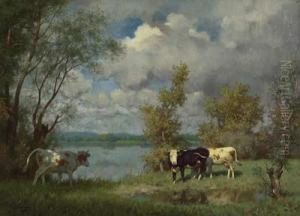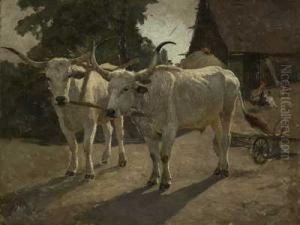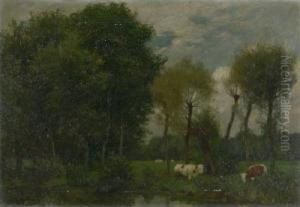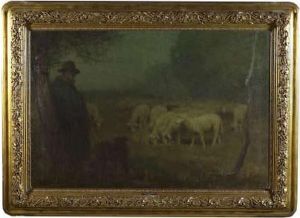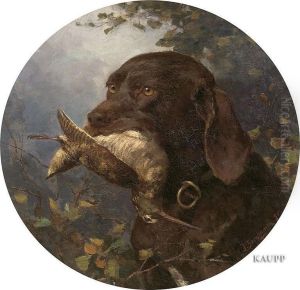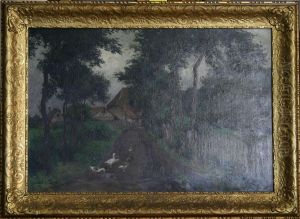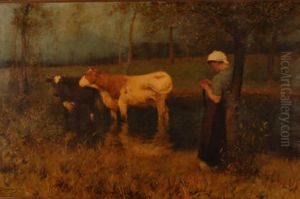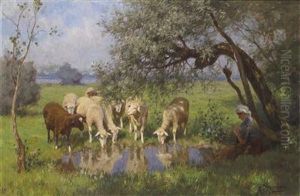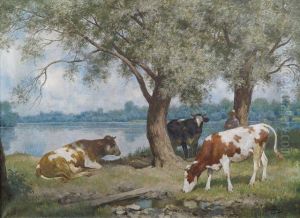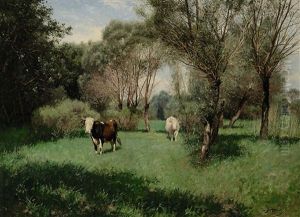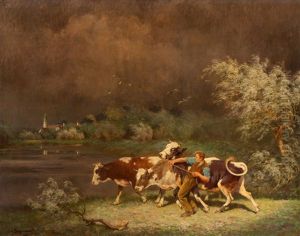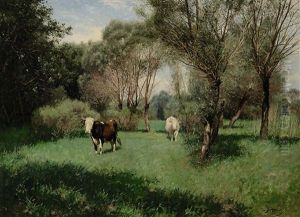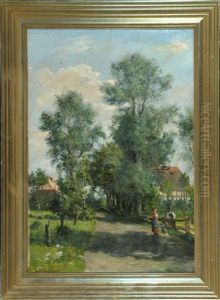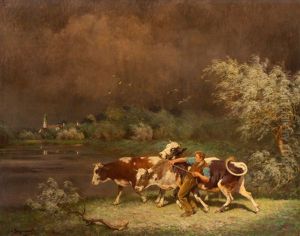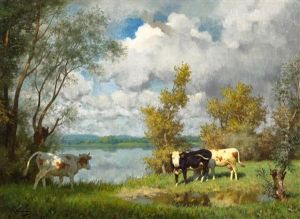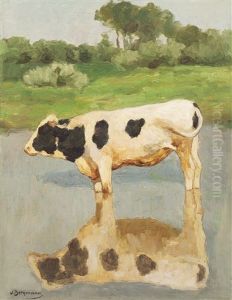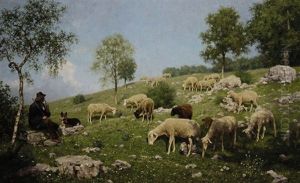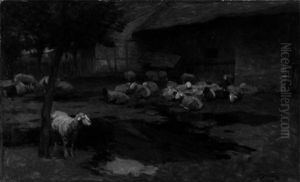Julius Hugo Bergmann Paintings
Julius Hugo Bergmann was a German painter and graphic artist, known for his contributions to the Symbolist and Art Nouveau movements in Europe during the late 19th and early 20th centuries. Born on March 15, 1871, in Mühlhausen, Thuringia, Bergmann showed an early inclination towards the arts. He pursued his education in fine arts at the prestigious academies in Munich and Berlin, where he was influenced by the burgeoning Symbolist movement, characterized by its emphasis on emotional and mystical connotations over realistic representation.
During his formative years, Bergmann developed a distinctive style that melded the intricate designs of Art Nouveau with the symbolic themes of love, death, and transcendence. His works often featured ethereal figures, floral motifs, and a subtle interplay of light and shadow, capturing the essence of Symbolism's fascination with the unseen forces of the universe.
Bergmann's career gained momentum in the early 1900s as his works were exhibited in various galleries across Europe, earning him recognition among art critics and patrons alike. He became a part of the Berlin Secession, a group of artists who sought to break away from the traditional academic styles and promote avant-garde art movements such as Impressionism and Expressionism.
Throughout his career, Bergmann experimented with various mediums, including painting, printmaking, and book illustration, showcasing his versatility as an artist. His graphic works, particularly his lithographs, were acclaimed for their technical precision and depth of emotion.
Despite his success, Bergmann's work was somewhat overshadowed by the tumultuous events of the early 20th century, including World War I and the rise of the Nazi regime in Germany. These events affected the artistic community deeply, impacting opportunities for artists to exhibit and sell their works.
Julius Hugo Bergmann continued to create art until his later years, passing away on June 22, 1950, in Berlin. Today, his contributions to the Symbolist and Art Nouveau movements are recognized for their beauty and emotional depth, securing his place in the annals of European art history. His legacy lives on in museums and collections worldwide, where his works continue to enchant and inspire new generations of art lovers and scholars.
